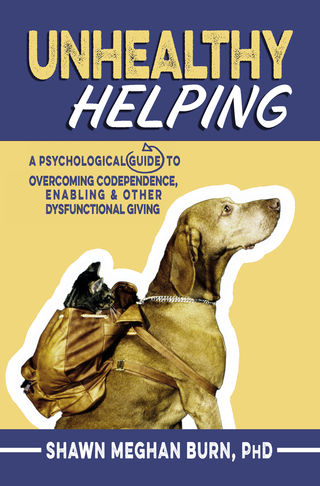Codependency
Are You a Codependent Beast of Others' Burdens?
Three Codependence Diagnostic Questions and Five Codependence Solutions.
Posted June 25, 2015

If you’re confused about the concept of codependence, you’re not alone! Mental health professionals and addiction specialists disagree on what exactly codependence is, where it comes from, and how to assess it and study it. There are still no agreed-upon diagnostic criteria and laundry lists of the qualities and behaviors of codependents abound.
So what exactly is codependence? Keeping it simple, I think it’s safe to say that codependence is a form of dysfunctional helping and giving characterized by deriving a sense of purpose through extreme self-sacrifice to satisfy the needs of others. People with codependent tendencies have a long-standing pattern of one-sided high-cost caretaking and rescuing relationships. Here are three simple diagnostic questions to get an idea of the strength of your codependent tendencies:
Thinking about your relationships and your support of others, to what extent:
1. Do you have a personal history of one-sided relationships where you assume other people’s age-appropriate responsibilities for managing their own lives, solving their own problems, doing their own work, or bearing the consequences of their own behavior and choices?
2. Do you have a pattern of persisting in your helping and giving even when it’s evident you’re enabling others’ immaturity, addiction, poor mental or physical health, incompetence, or irresponsibility?
3. Do you typically resist setting boundaries around your helping and giving even when it seriously strains your emotional, physical, or financial resources, harms your relationships, or compromises your integrity?
What should you do if you suspect you have codependent tendencies? Here are some suggestions:
1. Seek psychoeducation and bibliotherapy. Codependent people give of themselves in ways that are unhealthy so it pays for them to learn the difference between healthy and unhealthy helping so they can make better choices about who to help, how to help, and how long to help. Once you’re more aware of what you’re doing, doing it will create cognitive dissonance and help motivate your change. Psychoeducation entails learning about a mental health or relationship challenge and the healthiest ways to address it. Bibliotherapy is the use of books for psychoeducation and personal change. My book * may be useful since it explains the complex psychology behind codependence and other unhealthy giving. It clarifies the differences between healthy and unhealthy helping and giving. The book also provides many psychologically based change techniques for personal change and strategies for healthy helping and giving boundary setting.
2. Cultivate healthy, mutually giving relationships and redefine or end existing codependent relationships. Build up those relationships that aren’t based on your caretaking and others’ dysfunction. Tear down or remodel those that are. As soon as the red warning flags of dysfunctional helping and giving are waving in your relationship breeze, end or distance from the relationship, or set and maintain healthy boundaries around your giving.
3. Develop a habit of thinking before you rescue. People with codependent tendencies often impulsively intervene before others have a chance to empower themselves by finding their own solutions, and when in the long run, others won’t benefit from their intervention. They have to learn to sit with their discomfort from other people’s dilemmas long enough to make a rational decision about whether the short term gains of intervention outweigh the long-term costs to themselves and the people they’re supposedly helping. While your rescue temporarily may make you feel like a hero, provide a “helper’s high,” boost your self-esteem because you feel competent, bring you closer to someone, alleviate your own and another’s immediate distress, etc. it may not be advisable in the long run.
4. Get social support for your change. Identify and involve supportive friends and family to encourage you on your personal change journey. Or, join a codependency support group. Based on the 12-step model of Alcoholics Anonymous, these participant-led groups work through the twelve steps as applied to codependency and enabling. Not only is it comforting to be with people who understand your situation, you can also receive encouragement, be exposed to role models of change, and be inspired by the successes of group members. These groups aren’t a good fit for many but are key to recovery for some dysfunctional helpers and givers.
5. Seek counseling. You may find you need professional support to get a handle on your dysfunctional giving. Counseling can help you address the emotional issues underlying your unhealthy helping. It can help you counteract the faulty thinking that feeds your bad helping habit. It can help you develop effective boundary-setting skills and help you cultivate healthier relationships. A good counselor can be a valuable source of information, support, insight, and change strategies.

References
Burn, S. M. (2016). Unhealthy Helping: A Psychological Guide to Overcoming Codependence, Enabling, and Other Dysfunctional Giving. Also available as an e-book for Kindle, iBook, Nook, and Kobo readers.
Dear, G.E. Roberts, C. M, & Lange, L. (2005). Defining codependency: A thematic analysis of published definitions. Advances in Psychology, 34, pages 189-205.
Hogg, J.A. & Frank, M.L. (1992). Toward an interpersonal model of codependence and contradependence, Journal of Counseling & Development, 70, 371-375.




